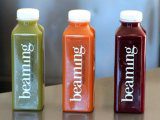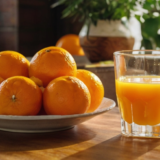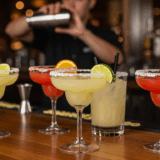PET vs rPET vs Biodegradable Bottles For Juice Businesses
by Ryan
If you sell juice, the bottle isn’t just packaging. It’s the first impression. Customers see it before they taste anything, and the wrong choice can hurt your product before it even leaves the fridge.
So what do you go with, PET, rPET, or biodegradable? PET is the dependable workhorse, rPET looks nearly identical but carries a recycled badge, and biodegradable promises eco-friendly but comes with limits.
In this guide, we’ll break down clarity, durability, shelf appeal, and cost so you know which bottle fits your business best, then point you straight to the order pages.
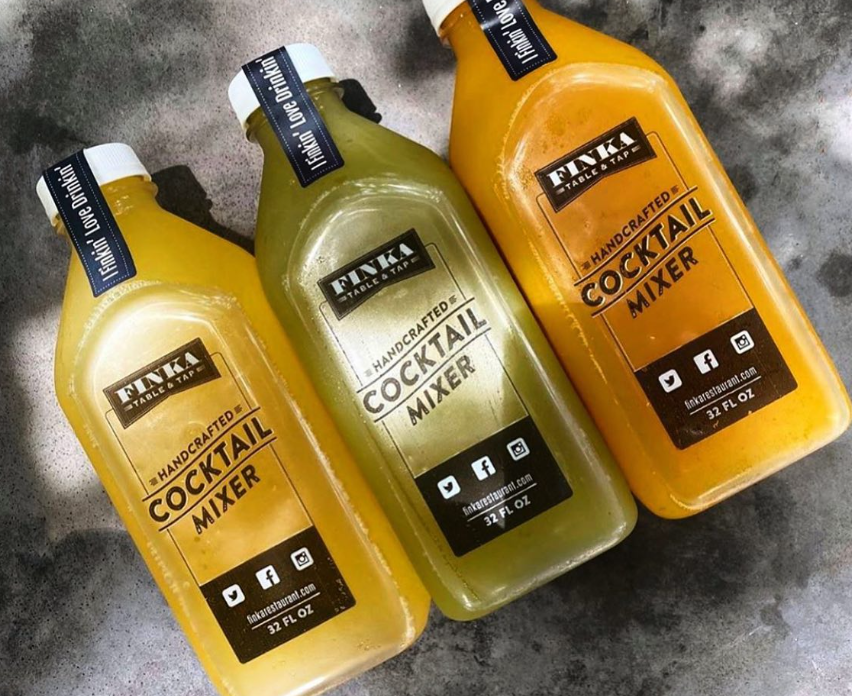
Why Bottle Choice Matters
When someone picks up a bottle of juice, they’re not just buying liquid. They’re buying the look, the feel, and the trust that what’s inside is worth it. That first impression carries a lot of weight. A cloudy bottle, a flimsy wall, or a leaky cap can make the best juice taste like a second-rate product before it even hits the tongue.
The choice goes deeper than looks too. Your bottles affect how smoothly operations run every single day. Storage space, shipping costs, how well labels stick when condensation hits, even your margins on every sale, they all tie back to the container you choose.
Pick right and your bottles will quietly do their job, helping your product sell itself. Pick wrong and you’ll fight issues on the shelf, in delivery boxes, and in your bottom line.
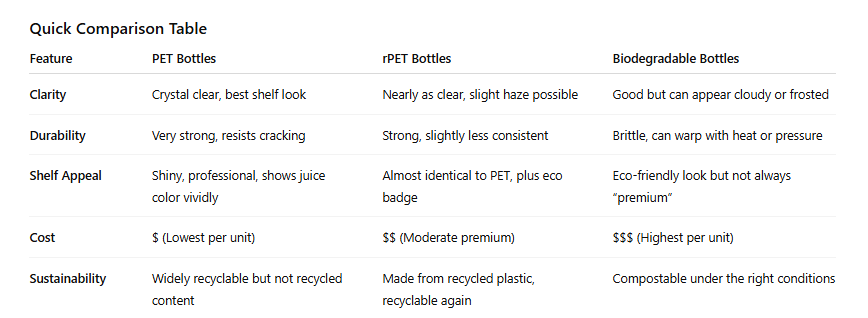
Cost Breakdown
When people ask “what’s the cheapest bottle,” the honest answer is PET. It’s usually the lowest cost per unit and the easiest to buy in bulk without surprises. rPET sits in the middle, often a small premium per bottle because of the recycled content. Biodegradable tends to be the most expensive, especially at smaller order sizes, since production runs are smaller and materials are pricier.
But cost isn’t only about the sticker price on a case. Indirect costs sneak in. PET and rPET stack well and store tightly, so you save space in the backroom. Biodegradable bottles can be more fragile and may need gentler handling, which means more storage headaches and occasional waste.
Labeling matters too. PET and rPET handle condensation better, so labels stick cleanly in a fridge. Biodegradable bottles sometimes need specialty labels that resist peeling, which adds a hidden cost.
Then there’s lead time and shipping. PET is widely stocked, so you can reorder fast. rPET can run into supply crunches depending on demand, which delays things. Biodegradable often comes with longer lead times and higher freight costs if you’re ordering from fewer suppliers.
So yes, PET wins on direct cost. rPET carries a small premium but pays back in marketing value. Biodegradable is the priciest, but for the right customer base, that eco story can offset the extra spend.
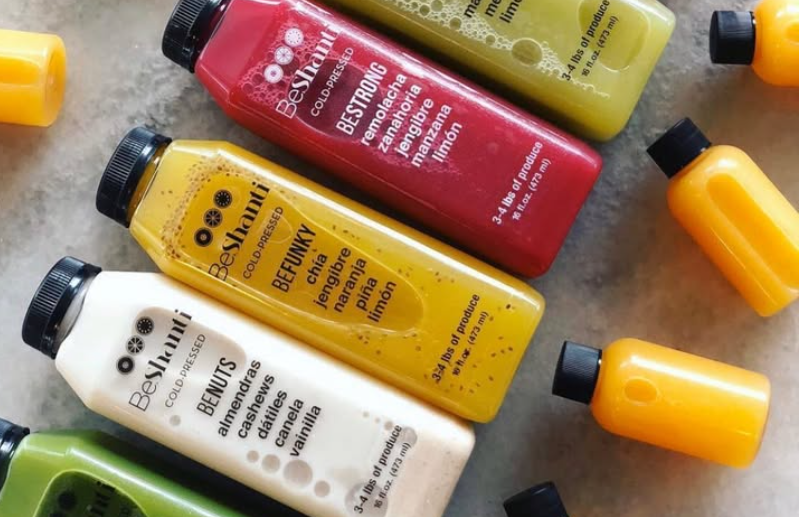
PET Bottles
PET, short for polyethylene terephthalate, is the classic plastic bottle most juice businesses rely on. It’s the industry standard for a reason: it delivers a crisp, glass-like look without the weight or breakability of glass.
The big win here is clarity. Juice looks bright, fresh, and inviting in PET, which makes it easy to sell straight out of a fridge case. The bottles are strong, stack well, and usually come in at the lowest cost per unit. They’re also stocked everywhere, so you’re rarely left waiting on a shipment.
The trade-off? PET doesn’t have recycled content, so it doesn’t carry much weight in sustainability messaging. Yes, it’s recyclable, but customers who want to see a “made from recycled plastic” claim won’t find it here.
Still, if you run a grocery juice program, a café fridge, or a hotel breakfast service, PET bottles are a the safe play. It checks the boxes on clarity, durability, and price while keeping operations simple
rPET Bottles
rPET stands for recycled polyethylene terephthalate. In simple terms, it’s PET that’s been collected, processed, and turned into new bottles. To the eye, it looks almost identical to standard PET, which is why more juice businesses are starting to switch.
The upside is big for branding. rPET carries a sustainability story that today’s customers notice, and the clarity is still strong. Most bottles look just like PET, though every now and then you might catch a slight haze depending on the production run. The only catch is cost and supply. rPET bottles usually come at a small premium per unit, and lead times can stretch when recycled material is in short supply.
If you run a café, sell on a campus, or need to check the sustainability box for corporate buyers, rPET is often the sweet spot. It balances appearance, durability, and an eco-forward story without sacrificing too much on function.
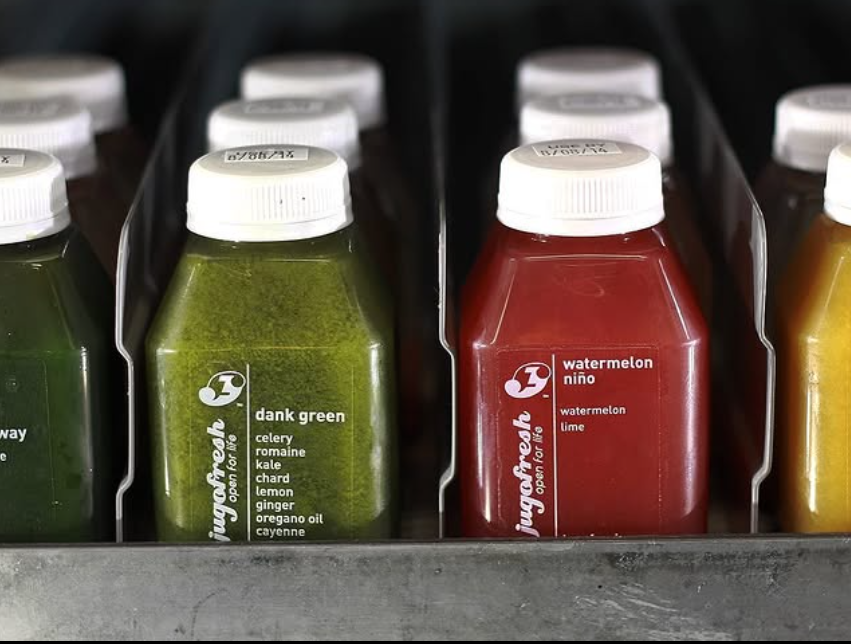
Biodegradable Bottles
Biodegradable bottles are usually made from plant-based resins like PLA or PHA. They’re designed to break down under composting conditions, which makes them appealing for brands that want a bold eco message.
The pros are clear: they signal eco-forward branding, look good on the shelf, and when handled correctly, they’ll compost instead of heading to a landfill. But there are real limitations. They’re more brittle than PET, they don’t handle heat well, and they require specific disposal systems most cities don’t fully support. On top of that, they’re almost always the most expensive option.
That doesn’t mean they don’t have a place. For zero-waste programs, boutique juice cleanses, or events where you can control the waste stream from start to finish, biodegradable bottles can set your brand apart.
Shelf Appeal & Branding
Let’s be real, looks sell juice before taste ever gets the chance. PET bottles shine under fridge LEDs like a clean glass trophy case. They stay crystal clear, labels grip tight, and condensation rolls right off without wrecking the design. Perfect for Instagram shots and in-store displays.
rPET bottles look nearly the same, though every now and then you’ll spot a touch of haze. That’s not a deal-breaker, most customers won’t even notice, especially if you lean into the recycled badge on your label. It flips the story from “almost as clear” to “eco-forward and proud.”
Biodegradable bottles look solid in the right light, but they can lose their shine under condensation and don’t always photograph as sharp. They send a strong message for eco branding, though, so if your audience values green above glossy, they’ll love it.
Operational Considerations
Think of bottles like equipment in your gym, the easier they are to handle, the fewer problems you’ll have. PET and rPET stack tight, handle cold storage without fuss, and won’t shatter if someone drops a case. They keep operations smooth and predictable.
Biodegradable bottles need more care. They don’t like heat, they don’t like rough stacking, and they can turn brittle if handled wrong. You’ve got to baby them a bit, which adds work for your team.
On labeling, PET and rPET are built for condensation. Standard labels hold fine, tamper bands snap tight, and you don’t have to hunt for specialty adhesives. Biodegradable? You’ll probably need labels made for wet surfaces and caps that match the material, otherwise you’ll deal with peeling and loose fits.
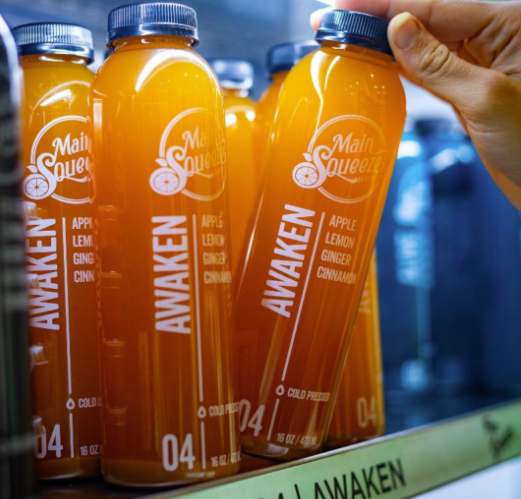
Choosing the Right Bottle for Your Business
If you’re running everyday grab-and-go juice, PET is the undefeated champ. It’s clear, cheap, and does its job without giving you headaches.
If your market wants to see eco-cred, rPET is the smart upgrade. It looks like PET, tells a recycled story, and still keeps operations smooth.
Biodegradable bottles are more like a specialty tool. Use them when you control the waste stream, zero-waste programs, boutique cleanses, or branded events where disposal is guaranteed. Otherwise you’re paying more for problems.
Best play? Test small first. Order a case of each, run them through your fridge, slap on your labels, and see how they hold up in real-world conditions. Then double down on the one that fits your business like a glove.
Still not sure? Call us and we can help you decide 1-800-997-5352


